Act to protect our
wildlife and communities
Fire ants are an environmental and national disaster.
These tiny killers first turned up in Australia at the northern port of Brisbane, but have since made it into the Murray Darling Basin catchment and charged the border into New South Wales. They were even intercepted in Tasmania and Victoria.
Each nest cluster contains hundreds of thousands of fire ants that swarm and kill native wildlife.
Current predictions estimate that 45% of birds, 38% of mammals, 69% of reptiles and 95% of frog populations in SE Qld alone could plummet if we don’t stop their spread.
With a sting three times more venomous than Australia’s native stinging insects, new infestations plague communities, closing local parks, beaches, gardens and sporting fields.
This national emergency needs an emergency response.
We know fire ants can be eradicated from Australia. Already, infestations in Perth, Sydney and Gladstone have been taken care of.
We’re calling on the Federal Environment to stop this unfolding disaster. But we need your voice behind us.
Add your name to help us reach 100,000 signatures.
For the sake of our ground-dwelling animals and native hatchlings – like platypuses and short-beaked echidnas, we need to demand urgent investment and national leadership to tackle the fire ant crisis before it’s too late.
Act Now
"*" indicates required fields
Your donation is a lifeline for Aussie wildlife.
Invasive species destroy our natural places and transform the landscape, leaving our native animals without shelter or food and natural systems destroyed. You can help create an Australia where our unique wildlife is safe in flourishing protected areas.






